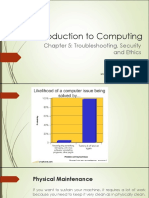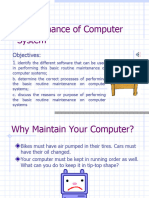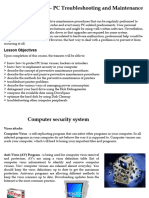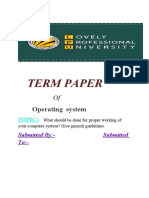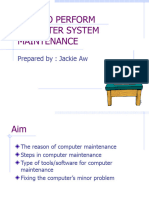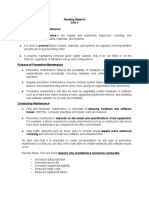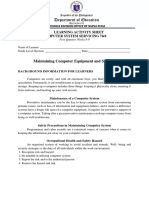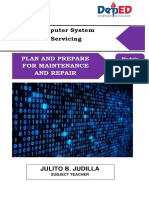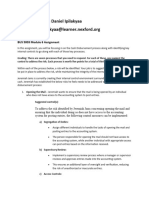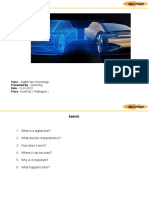0% found this document useful (0 votes)
5 views4 pagesMaintenance of Computer System
The document outlines essential maintenance practices for computer systems, emphasizing the importance of data backup, malware maintenance, and disk maintenance. It details various data backup methods, including removable media, external hard drives, cloud storage, and professional backup services. Additionally, it provides tips for maintaining hard drive performance and protecting against malware to ensure the longevity and reliability of computer systems.
Uploaded by
dixie avilaCopyright
© © All Rights Reserved
We take content rights seriously. If you suspect this is your content, claim it here.
Available Formats
Download as PDF, TXT or read online on Scribd
0% found this document useful (0 votes)
5 views4 pagesMaintenance of Computer System
The document outlines essential maintenance practices for computer systems, emphasizing the importance of data backup, malware maintenance, and disk maintenance. It details various data backup methods, including removable media, external hard drives, cloud storage, and professional backup services. Additionally, it provides tips for maintaining hard drive performance and protecting against malware to ensure the longevity and reliability of computer systems.
Uploaded by
dixie avilaCopyright
© © All Rights Reserved
We take content rights seriously. If you suspect this is your content, claim it here.
Available Formats
Download as PDF, TXT or read online on Scribd
/ 4






